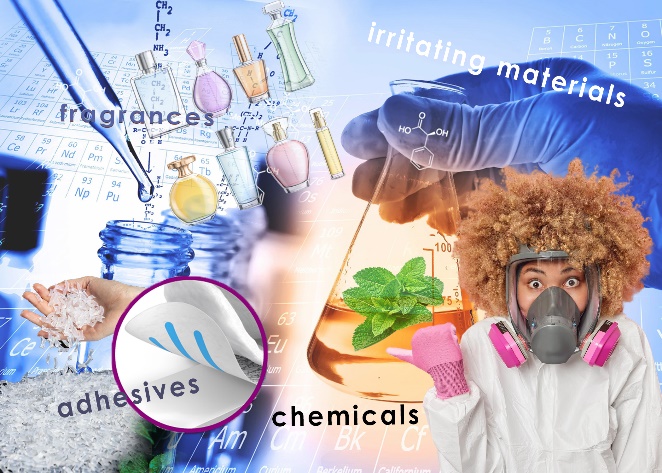Rashes due to pads are common but do you know why are they caused? To know causes & how to treat them, read this article.
Wearing a sanitary pad can result in a rash due to friction from movement. Walking, running, and other forms of physical activity, according to the Centre for Young Women's Health, can cause the pad to move back and forth, contributing to a friction rash on the vulva. The rash may occur because of irritation caused by something in the pad's composition. In some cases, the combination of moisture and heat can contribute to bacterial growth.
Causes of Pad Rash
Contact dermatitis
Contact dermatitis means allergic skin reactions and this can happen when a person develops a rash due to various materials or chemicals that encounter the vulva. Sanitary napkins contain a variety of irritating materials, such as adhesives and, in some cases, fragrances. People with sensitive skin may find that they
react to certain types of sanitary napkins due to the materials in the sanitary napkins. In these cases, switching brands can help prevent future breakthroughs.

Moisture and heat
A sanitary pad's purpose is to trap and absorb instead of collecting menstrual fluids as they exit the vagina. The trapped moisture and heat can irritate and cause a rash on the vulva.
A rash on the vulva could be caused by several irritants associated with pads and underwear. These are some examples:
- Adhesives in panty liners
- Nylon underwear
- Sweat
- Urine
Changing sanitary napkins infrequently
It is important for people to change sanitary napkins regularly throughout the day. Allowing it to fill up and get closer to the vulva can lead to the development of a rash. People should choose a mat that suits their menstrual flow. If a person buys a cushion with a large flow, but only experiences a slight flow, they may think that they do not have to change the mat frequently. However, no matter how small the flow, people should change their sanitary napkins every 2-4 hours. This is necessary to avoid the smell of bacteria and prevent irritation.
Fragrance
In addition to these ingredients, some manufacturers may add fragrance to their pads. Some women's skin may be sensitive to chemicals used to provide fragrance. However, most cushions have a fragrance layer placed under the absorbent core. This means that the core of the fragrance is unlikely to contact with your skin.
How to treat pad rash?
Treatment for pad rash can vary depending on the exact cause.
For contact dermatitis, it is recommended to try different brands or Dioxin free sanitary napkins. Others may find that using a smaller pad helps reduce friction-related rash.(For adult, you may even want to consider alternatives, such as tampons or menstrual cups.) Some treatments for contact dermatitis include:
- Using unscented sanitary pads
- Wearing loose cotton underwear to reduce friction
- Trying different brands or dioxin-free pads to reduce side effects
- Frequently changing pads to avoid excessive moisture and reduce the risk of irritation
- Use cotton/pure cotton/organic cotton pads that do not contain any dyes or adhesives/ dioxin free. These pads are more expensive, but if you have sensitive skin, they may help prevent rashes
- Using antifungal ointment to prevent yeast infections; consult a pharmacist or doctor before use
- Consulting a doctor if the condition is severe and affects your daily life or causes discomfort
By following these measures, you can effectively alleviate pad rash and find a solution that works for you.
When to consult a doctor?
A person should consult their
doctor before using ointments or creams to treat rashes. Certain medications, such as topical steroids, may be too strong for a person to use on their genitals. Conversely, cold compresses or warm baths can help relieve symptoms without the need to see a
doctor. If the rash does not improve after you stop using the sanitary napkin for a few days, you may need additional treatment or may be infected.


 Indonesia
Indonesia